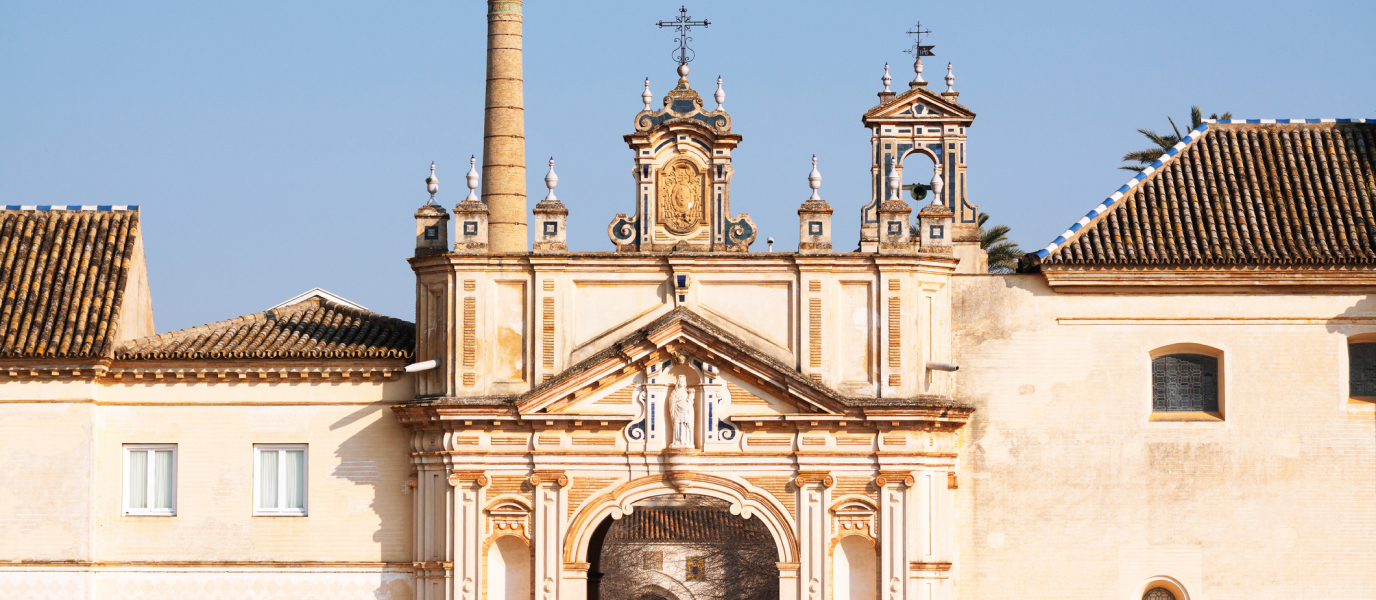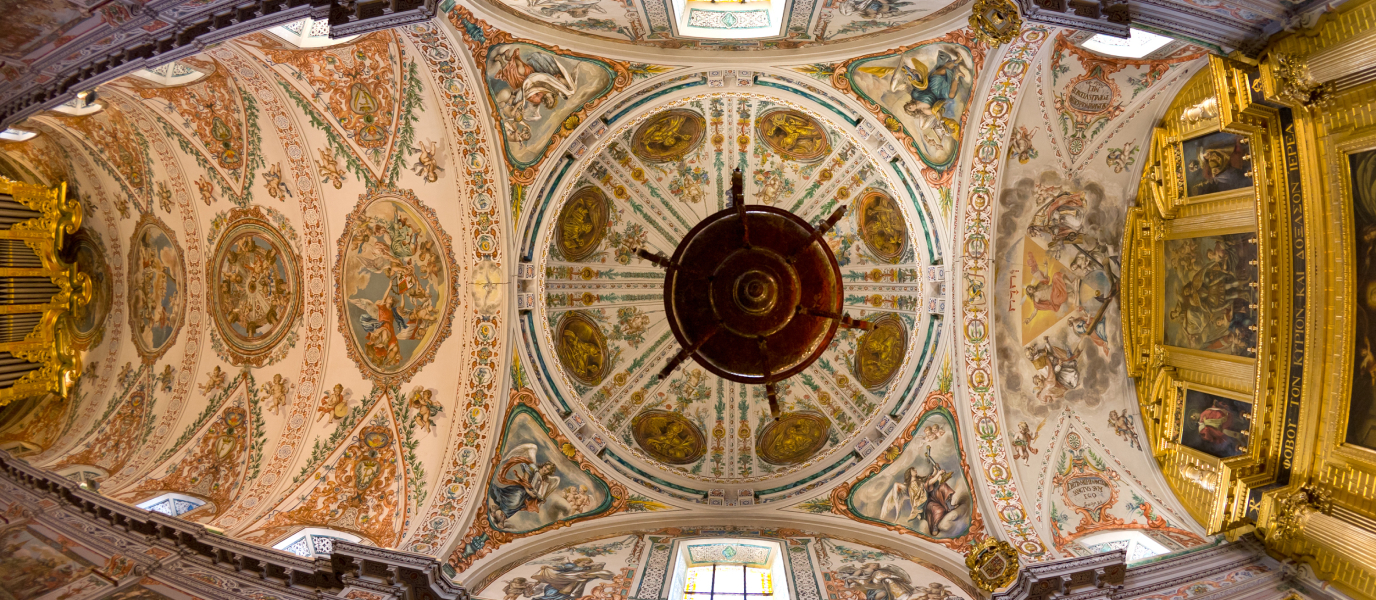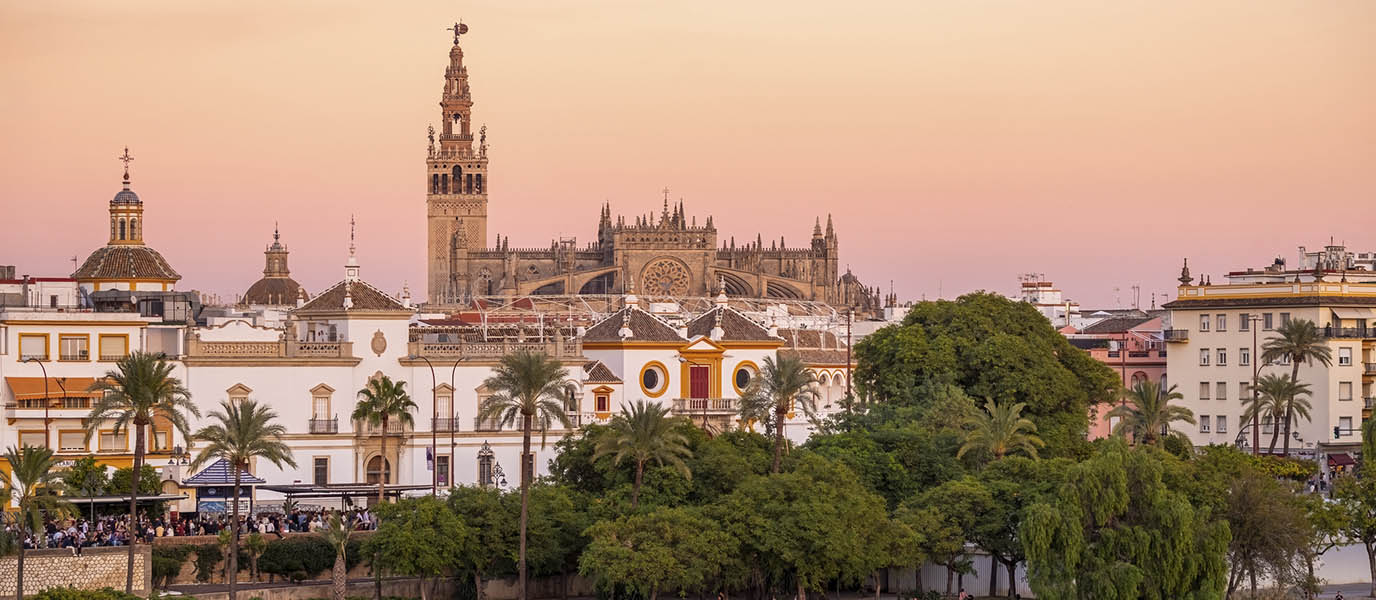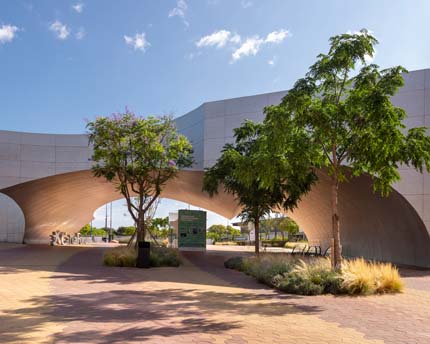Located between Triana and the remaining pavilions of Expo ‘92, and surrounded by the river Guadalquivir (which, as it flows through the Andalusian capital, separates into two arms, which could be said either to isolate the monastery or to embrace it), the monastery of La Cartuja has watched the history of Seville unfurl both inside and outside of its walls. It was a silent witness to the Island of La Cartuja putting on its finery and becoming the focus of the world’s attention during the Seville World Fair—and to the disappearance of most of the pavilions after their original purpose, their raison d’être, had passed.
Similarly, the Monastery of La Cartuja has witnessed the resurgence of an area of Seville that has been undergoing a genuine process of reinvention during recent years; this with a commitment to a contemporary style of architecture which can be glimpsed in the distance from the city’s attractive historic quarter. The CaixaForum cultural centre and the Seville Tower—the skyscraper designed by the Argentinian architect César Pelli—are good examples of this. In any case, the monastery is well used to adapting to new times, and over the centuries it has demonstrated an almost chameleon-like ability to take on different functions, always emerging gracefully from the passage of history.
The monastery of La Cartuja de Santa María de las Cuevas de Sevilla
This is, in fact, its full name. But don’t panic: everyone knows it as the monastery of La Cartuja. When we look at its origins, it is essential to understand that the monument was built on extremely fertile land, given its proximity to the river, and it was for that very reason that the Almohad potters decided to set up their kilns in this area. According to the chronicles, a vision of the Virgin of the Caves appeared in one of these kilns in 1298, and subsequently a Franciscan hermitage dedicated to her was established here.
In 1399, Gonzalo de Mena, the then archbishop of Seville, initiated the establishment of a Carthusian monastery, which was completed in the late fifteenth century. The monastic complex was strongly supported by the city’s most prominent families (such as the Riberas, the Veraguas and the Mena), and it built up an illustrious heritage—which included pieces of art by Esteban Murillo, Alonso Cano, Francisco de Zurbarán, Juan Martínez Montañés and Pedro Duque Cornejo.
Various monarchs have spent time in residence here, including Philip II, who would come here for his spiritual retreats, as well as renowned figures such as Teresa de Jesús. The body of Christopher Columbus was interred in its church for three decades, as the Genoese explorer had maintained a strong link with the monastery, staying there during the preparations for his second voyage.
The second life of the monastery of La Cartuja
The Napoleonic invasion brought an end to the peace that had reigned in the monastery—until then disturbed only by frequent flooding caused by the rising Guadalquivir. In 1810, therefore, French troops occupied the monastery of La Cartuja, causing the monks to flee to Portugal. Although they were able to return two years later, the peace did not last long, as in 1836 the Mendizábal Disentailment resulted in the monastery’s permanent expulsion from the Order.
Three years later, the complex began to operate as a factory producing earthenware and porcelain china under the management of the English entrepreneur Charles Pickman. At the beginning, adaptations made to the historic complex were duly respectful, but as time passed, this sensitivity was lost, and pragmatism prevailed. There is no question that these alterations had a negative impact on the appearance of the monastery of La Cartuja, whose church is nowadays surrounded by a series of tall chimneys.
The factory continued in production until 1982. Later, the Regional Government of Andalusia became involved, with the aim of rehabilitating an edifice of great importance from both an architectural and a historical point of view. Consequently, the building housed the Royal Pavilion during Expo ‘92, and since 1997 it has been the headquarters of the Centro Andaluz de Arte Contemporáneo [Andalusian Centre for Contemporary Arts], an institution that promotes and showcases the work of local artists through exhibitions, recitals and concerts.
What to see at the monastery of La Cartuja
- The church. At the centre of the monastic complex, surrounded by the chimneys of the former porcelain factory, the façade of this single-nave church reflects a careful balance between Gothic architectural expression and Mudéjar techniques. At the entrance to the church is a pointed arch framed by slender columns, while into the wall behind is set a decorative rose window adorned with glazed ceramics in various colours. Inside the church, it is worth pausing in the chapel of Santa Ana, which held the tomb of Christopher Columbus for almost three decades, and in the chapel of La Magdalena, which was used as a place of worship while the church was being built. The ceiling is a ribbed vault which begins in the nave and ends in the presbytery.
- The vestry. The vestry was completed during the sixteenth century, and reflects a Mudéjar style. During the invasion by the French, the sacred nature of the building was not respected, as the troops used it as, of all things, a slaughter-house.
- The Mudéjar cloister. The cloister is small, but perfectly reflects one of the great achievements of the Mudéjar style: the ability to accomplish wonderfully harmonious results using the most humble of materials, such as brick.
So you see, the monastery of La Cartuja is a unique and diverse monument, a historical witness rooted in the outskirts of Seville’s city centre.







































































